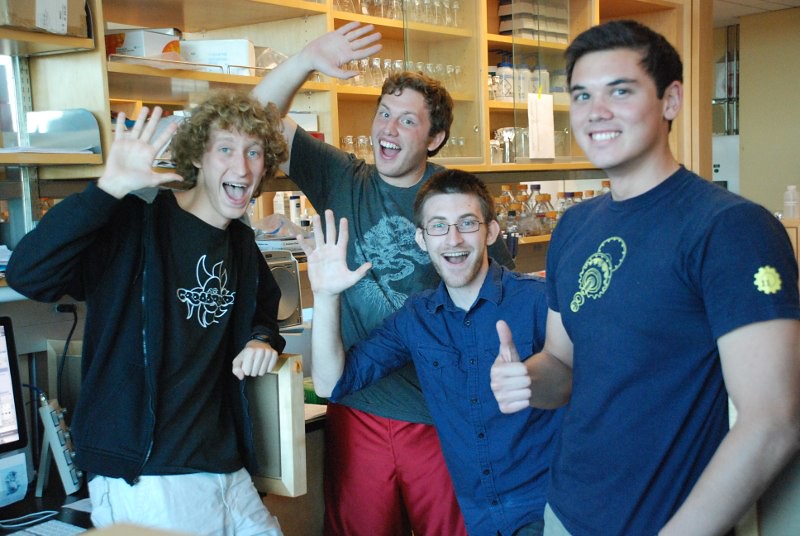Team:UC Davis
From 2011.igem.org
| Line 29: | Line 29: | ||
| - | <div class=" | + | <div class="floatbox"> |
<h2>Want to Make Your Own Mutant Library?</h2> | <h2>Want to Make Your Own Mutant Library?</h2> | ||
We developed a cheap and easy way to make part families which any team can do! Click <a href=""> here</a> to learn more about our process. | We developed a cheap and easy way to make part families which any team can do! Click <a href=""> here</a> to learn more about our process. | ||
Revision as of 16:35, 16 October 2011
Start a Family
Got a favorite BioBrick? Check our our process for expanding basic parts into part families.Criteria
View our judging criteria for iGEM 2011 here.
Welcome
 Welcome to iGEM 2011 at UC Davis!
Welcome to iGEM 2011 at UC Davis!
The four of us have been hard at work on this year's project. Things are coming along well -- we've fine tuned a powerful (and simple) mutant library generation process, created, screened and characterized a set of LacI promoter mutants, and created several TetR and λ cI promoter mutants for further characterization. We even mutated GFP!
We also developed KO3D, a 3D javascript plotting library, for displaying characterization data for our mutants.
We are excited for the regional competition in Indianapolis and look forward to seeing all of the other American teams there!
Our Project
This is the third time a team at UC Davis has competed in the iGEM Jamboree. This year, we are focusing on foundational advances for BioBrick circuit synthesis. There is a need for more parts which have well-characterized variants which range in activity. Our project aims to streamline the process of mutant library generation from BioBrick parts, from promoters to protein-coding genes.
 We set out to create useful mutant libraries of commonly used parts, starting with the repressible LacI, TetR and Lambda c1 promoters. You can read more about our project here.
We set out to create useful mutant libraries of commonly used parts, starting with the repressible LacI, TetR and Lambda c1 promoters. You can read more about our project here.
We think that thorough characterization should be a priority for all parts submitted to the registry. You can view information about our projecthere. You can also review our characterization process and characterization data for LacI on our data page.
 "
"




